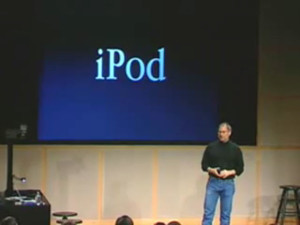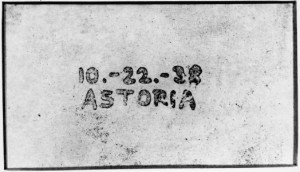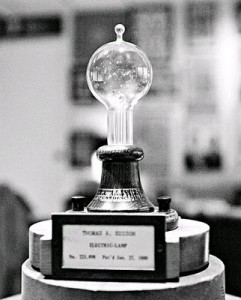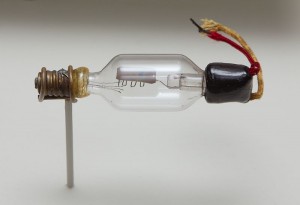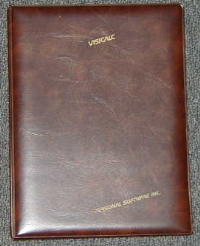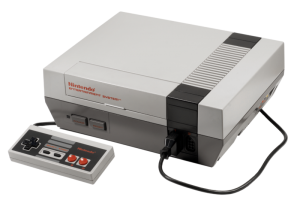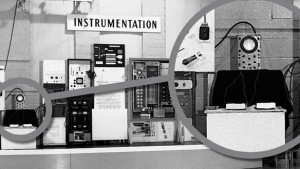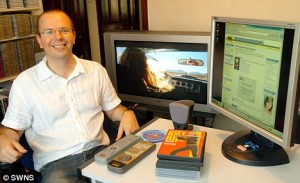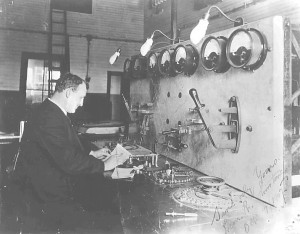1000 Songs in Your Pocket
Using the slogan, “1000 Songs in Your Pocket,” Steve Jobs introduces the original iPod, featuring a 5 GB hard drive, Firewire connectivity, and synchronization to iTunes. By using a 1.8″ drive, the iPod was significantly smaller than competing MP3 players of the time. The Firewire port allowed simultaneous charging and high-speed music synchronization, innovative for its time. At the time, the original iPod only worked with Macintosh computers. However, the popularity of the iPod among Windows users – who had to hack together a solution to use it with their computers – prompted Apple to release a Windows compatible version in the second generation of iPods. With the introduction of the iTunes Music Store in June of 2003, the runaway success of the iPod completely changed the landscape of the music and computer industry.
Photocopying Invented
In a makeshift lab on the second floor of a rental house, Chester Carlson and his assistant Otto Kornei successfully invent the process that would lead to the photocopier. Carlson had written “10.-22.-38 ASTORIA” on a piece of paper and these became the historic words that were the first photocopied. Ironically, Kornei had so little faith in the invention that within a year he quit working for Carlson and willingly gave up any claims he had on the process. However, Carlson would later gift Kornei 100 shares of the Xerox corporation that would eventually be worth $1 million.
Apple Introduces PowerBook
At the COMDEX computer expo in Las Vegas, Apple introduces the first line of PowerBook notebook computers, the PowerBook 100, PowerBook 140, and PowerBook 170. The first truly portable Macintosh, the PowerBook line redefined portable computing and set the bar for future laptop designs. For example, the PowerBooks were the first laptop to have a trackball positioned in front of the keyboard. Most existing PC laptops of the time ran DOS and were therefore keyboard-oriented, requiring the use of external mice.
Edison Perfects Light Bulb
Thomas Edison perfects the first commercially practical incandescent light bulb. Using a filament of carbonized cotton thread, his first attempt at this design results in a bulb that lasts about 13.5 hours before burning out. He later extends the life of the bulb to 40 hours. Edison’s successful design came only after he had tested over 6,000 different vegetable fibers during a span of over 18 months running 1,200 experiments and spending $40,000.
Triode Announced
Dr. Lee DeForest announces his three-element electrical vacuum tube, later known as a triode. The triode was able to produce a large voltage-amplifying effect, which when used to amplify weak signals, will make long-distance communication possible for the first time.
VisiCalc Officially Released
According to Dan Bricklin, the first “real” release of VisiCalc was completed and packaged for shipment. VisiCalc was the first commercially available spreadsheet software and quickly became the first “killer app” of the personal computer market.
NES Hits North America
Nintendo releases the Nintendo Entertainment System (NES) in New York and limited other North American markets. An immediate hit, Nintendo released the game nationwide in February 1986. Along with the NES, Nintendo released eighteen games that day, including: 10-Yard Fight, Baseball, Clu Clu Land, Donkey Kong Jr. Math, Duck Hunt, Excitebike, Golf, Gyromite, Hogan’s Alley, Ice Climber, Kung Fu, Mach Rider, Pinball, Stack-Up, Tennis, Wild Gunman, Wrecking Crew, and Super Mario Bros.
The World’s First “Video” Game
William Higinbotham and Robert Dvorak, Sr. show off a tennis simulator game they called Tennis for Two. Developed on a Donner Model 30 analog computer using an oscilloscope, it is the first known electronic game to use a graphical display. Higinbotham and Dvorak developed the game to show off to visitors to the Brookhaven National Laboratory where they worked. The game was only shown off twice, during the laboratory’s annual visitor’s day. While hundreds of visitors lined up to play the game when it was made available, little was known about the game for decades. While somewhat similar in gameplay to the later hit Pong, there is no known direct relationship between the games.
IMDb Launched
Colin Needham, an English movie fan, launches the “rec.arts.movies movie database”, which would later be known as the Internet Movie Database, or IMDb. An engineer working for HP at the time, by 1996 Needham quit his job to work on IMDb full-time. The IMDb is one of the most visited sites on the Internet and was acquired by Amazon in 1998. Needham is still the General Manager of the IMDb to this day.
First Transatlantic Wireless Telegraph Service
Guglielmo Marconi officially opens the first commercial transatlantic wireless telegraph service, which runs between Nova Scotia and Ireland.

